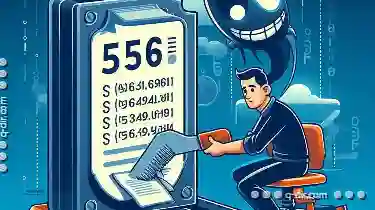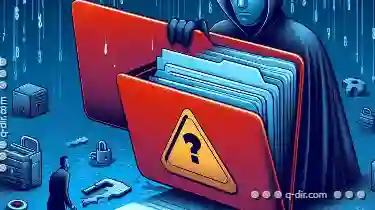Losing data due to storage device corruption is an all too common issue that can strike at any time. Whether it's your hard drive, USB drive, or memory ...
 card, the loss of important files can be devastating. However, with the right tools and methods, you may be able to recover some or all of your lost data. In this blog post, we will discuss how to paste files from a corrupted storage device using various software solutions.
card, the loss of important files can be devastating. However, with the right tools and methods, you may be able to recover some or all of your lost data. In this blog post, we will discuss how to paste files from a corrupted storage device using various software solutions.1. Understanding File System Corruption
2. Step 1: Stop Using the Corrupted Drive
3. Step 2: Connect the Corrupted Drive to Another Computer
4. Step 3: Use a Data Recovery Software
5. Step 4: Use Command Line Tools for Advanced Users
6. Step 5: Backup Your Data Regularly
7. Conclusion
1.) Understanding File System Corruption
File system corruption occurs when there is an error in the way information is stored on the storage device. This can be due to sudden power loss, improper removal of the drive, virus attacks, or other issues. When this happens, you may find that your files are inaccessible or appear as "unreadable" icons.
2.) Step 1: Stop Using the Corrupted Drive
The first thing you should do when you suspect a storage device is corrupted is to stop using it immediately. Continuing to use the drive could cause further data loss and potentially damage other devices connected to your computer.
3.) Step 2: Connect the Corrupted Drive to Another Computer
To access the files on the corrupted drive, you will need another working computer that can recognize the drive's file system. Most modern computers should be able to read FAT32, NTFS, exFAT, or other common file systems, but this may vary depending on the operating system and version of the storage device.
4.) Step 3: Use a Data Recovery Software
Several data recovery software programs are available that can help you recover files from a corrupted storage device. Some popular options include:
- Recuva (Windows)
- EaseUS Data Recovery Wizard (Windows and macOS)
- Wondershare Recoverit (Cross-platform, supports Windows, macOS, and Linux)
- MiniTool Power Data Recovery (Windows)
These programs can often detect the drive and scan for recoverable files. Make sure to select the appropriate file system type when prompted by the software.
How to Use a Data Recovery Software:
1. Download and install the data recovery software on another working computer.
2. Connect the corrupted storage device to this computer.
3. Launch the data recovery software, and follow the prompts to scan the drive for recoverable files. The software will usually display a list of file types it found during the scanning process.
4. Preview the recovered files before you decide which ones you want to save to your working computer or another storage device.
5. Select the files you wish to save and follow the on-screen instructions to save them to a new location.
5.) Step 4: Use Command Line Tools for Advanced Users
For more advanced users, command line tools like TestDisk (a cross-platform data recovery software) can be used to recover files from a corrupted storage device. TestDisk is powerful and versatile but may require some technical knowledge to use effectively.
How to Use TestDisk:
1. Download TestDisk for your operating system from its official website.
2. Follow the installation instructions provided in the software package.
3. Connect the corrupted drive to your computer.
4. Open a terminal or command prompt and navigate to the TestDisk directory.
5. Run the following commands, depending on whether you are using NTFS or FAT32:
- For NTFS (Windows): `testdisk /dev/sdX`
- For FAT32: `testdisk --fat /dev/sdX`
6. Follow the prompts and instructions provided by TestDisk to scan and recover your files.
6.) Step 5: Backup Your Data Regularly
The most effective way to deal with potential data loss is to create regular backups of important files. Use external hard drives, cloud storage services, or network-attached storage (NAS) devices for offsite backup solutions. This will allow you to recover your data quickly and efficiently in case of a file system corruption or other disasters.
7.) Conclusion
Losing files due to corrupted storage devices is frustrating but not necessarily devastating if you have the right tools and knowledge at hand. By following these steps, you can attempt to paste files from a corrupted storage device using various software solutions. Remember to always stop using the drive immediately, connect it to another computer, use data recovery software, and consider implementing a regular backup strategy for future peace of mind.

The Autor: / 0 2025-06-02
Read also!
Page-

The Uncluttered View: Details View Advantages
One such interface element that has gained significant traction is the details view. This article delves into the advantages of using details views ...read more

How File Attributes Can Corrupt Your Data Without Warning
However, one of the most common yet often overlooked aspects of file management is the concept of file attributes. While these attributes seem like a ...read more

File Naming Conventions: Best Practices
File management is an essential aspect of any digital workflow. Whether you're a student, professional, or hobbyist, knowing how to effectively ...read more